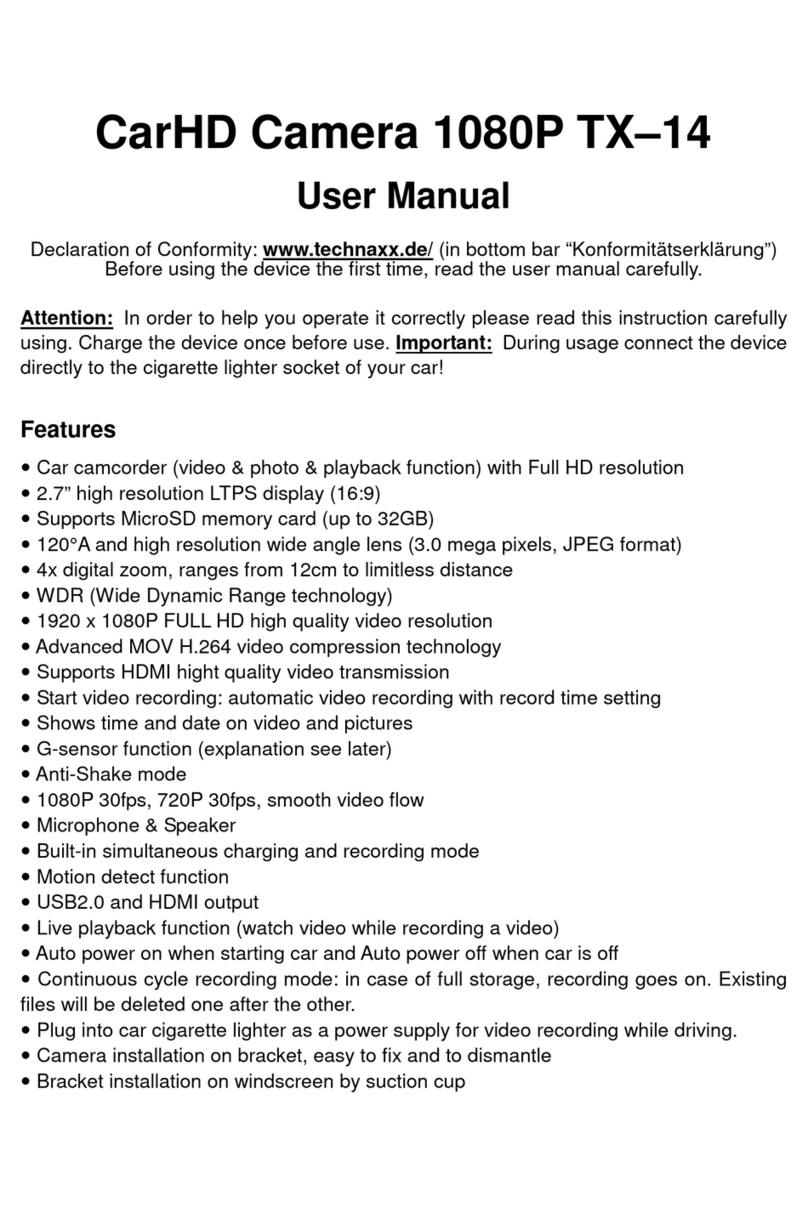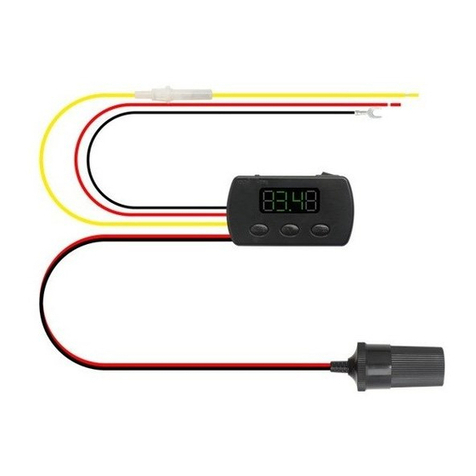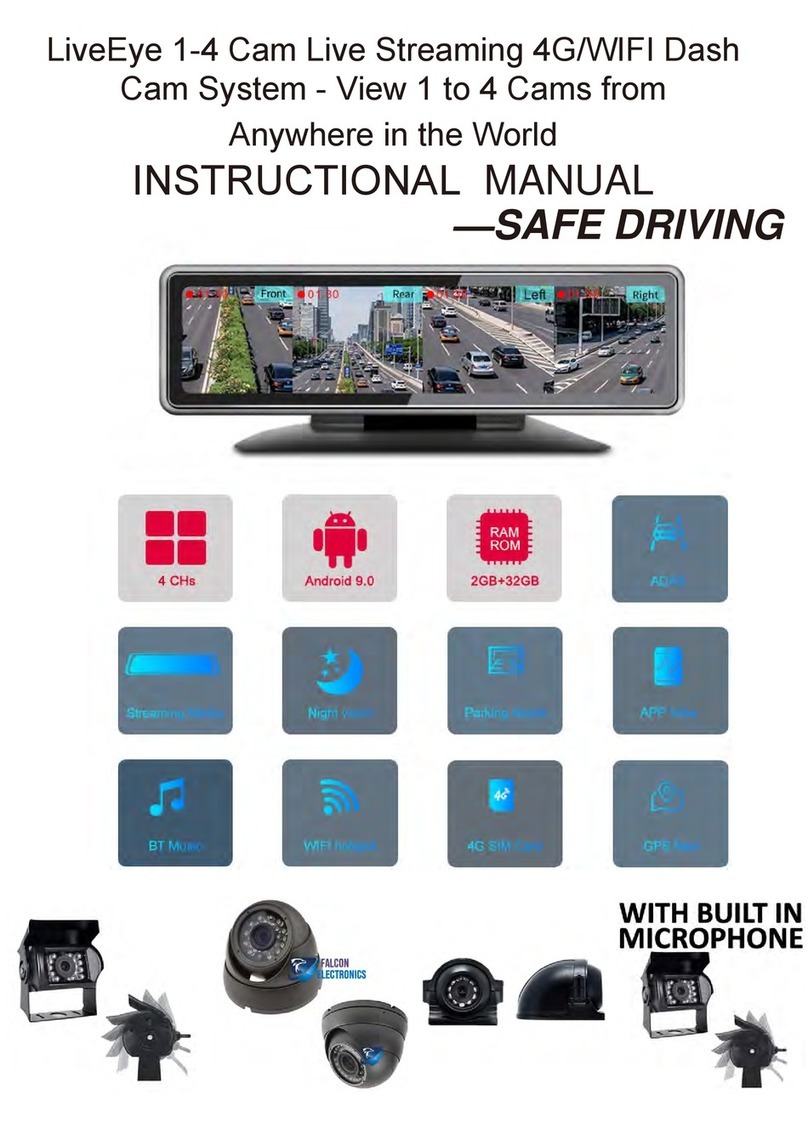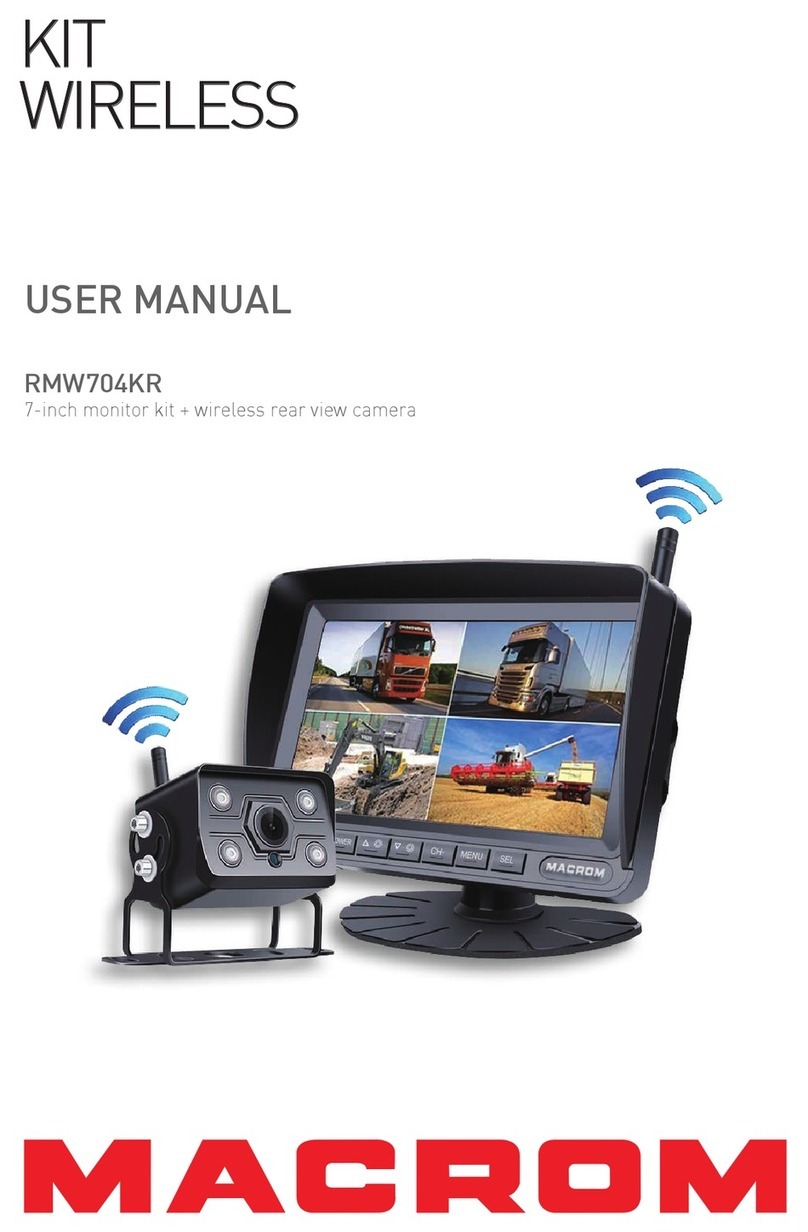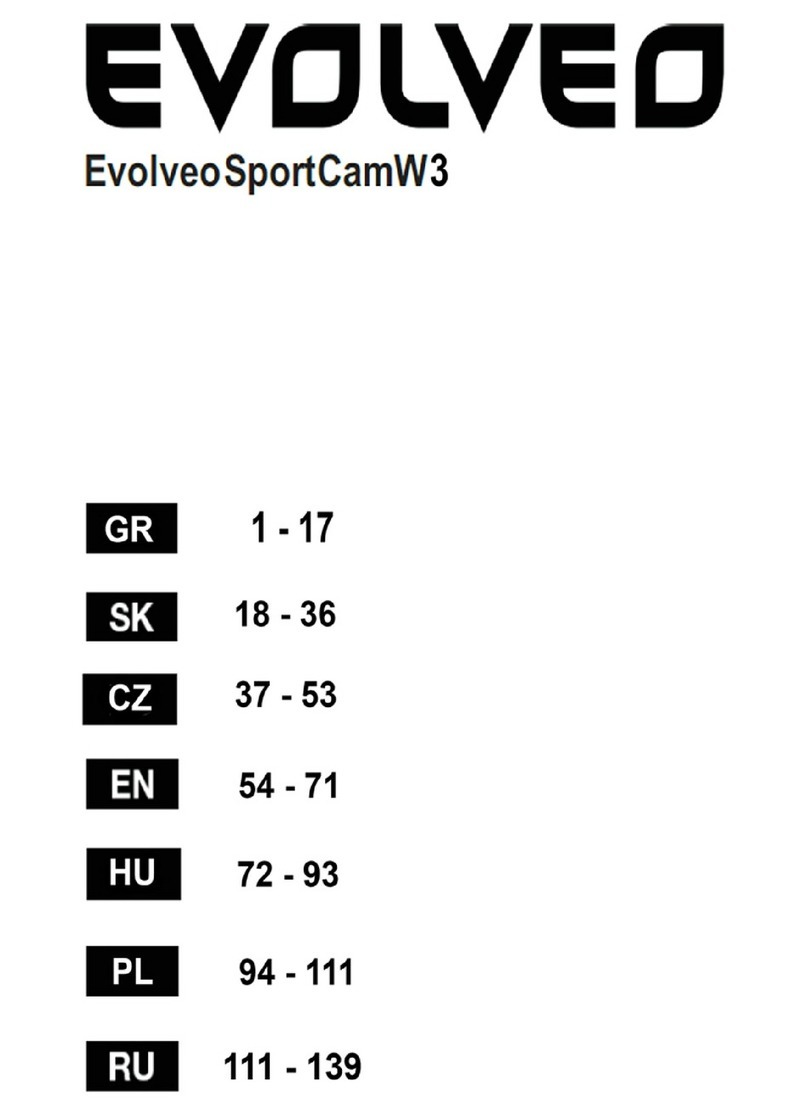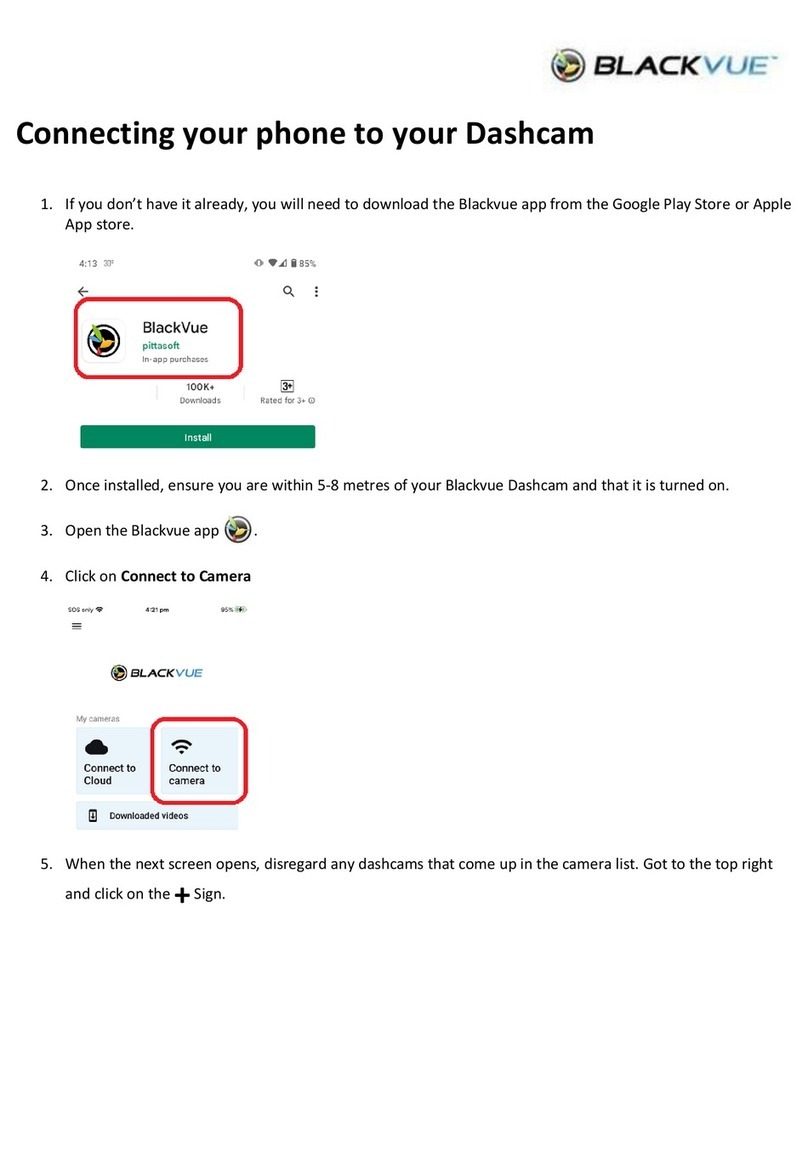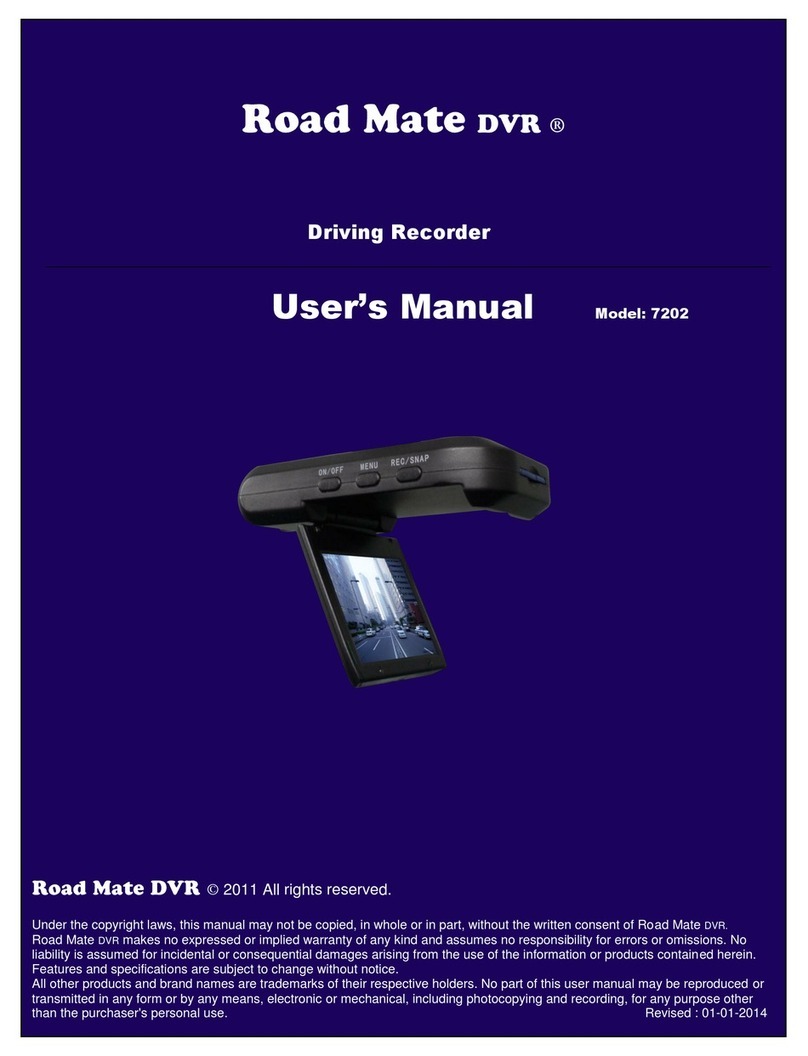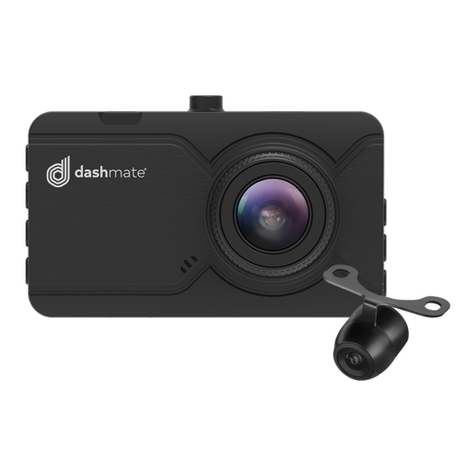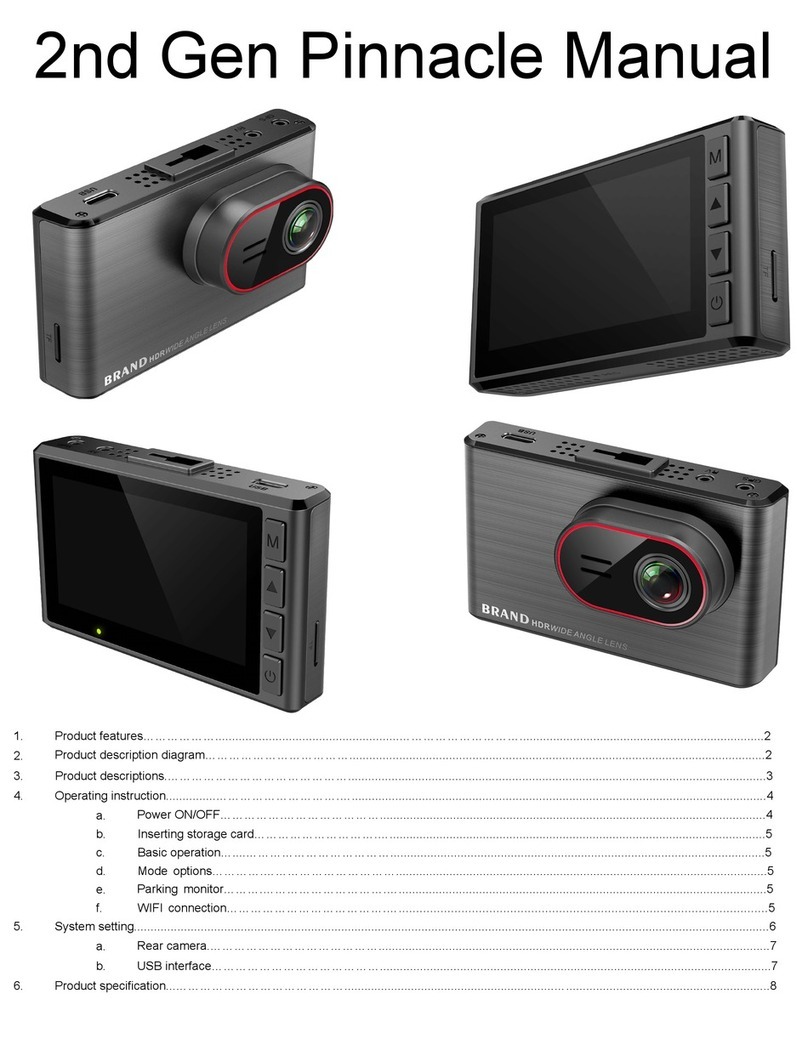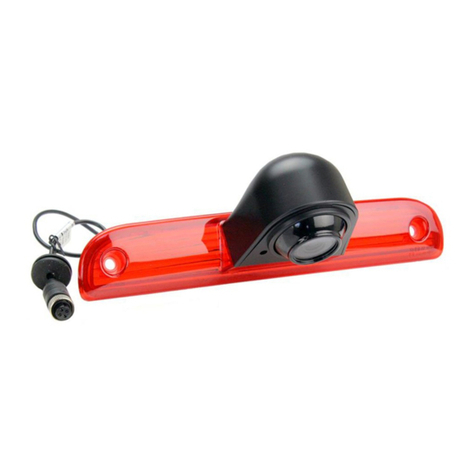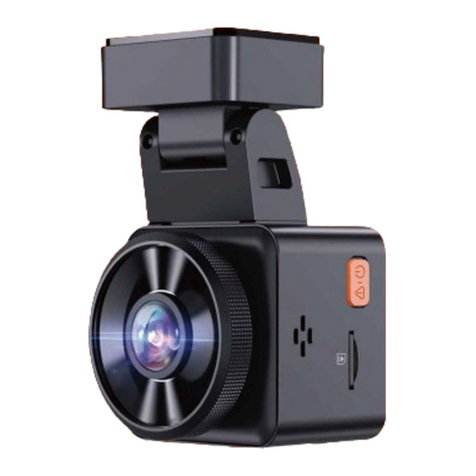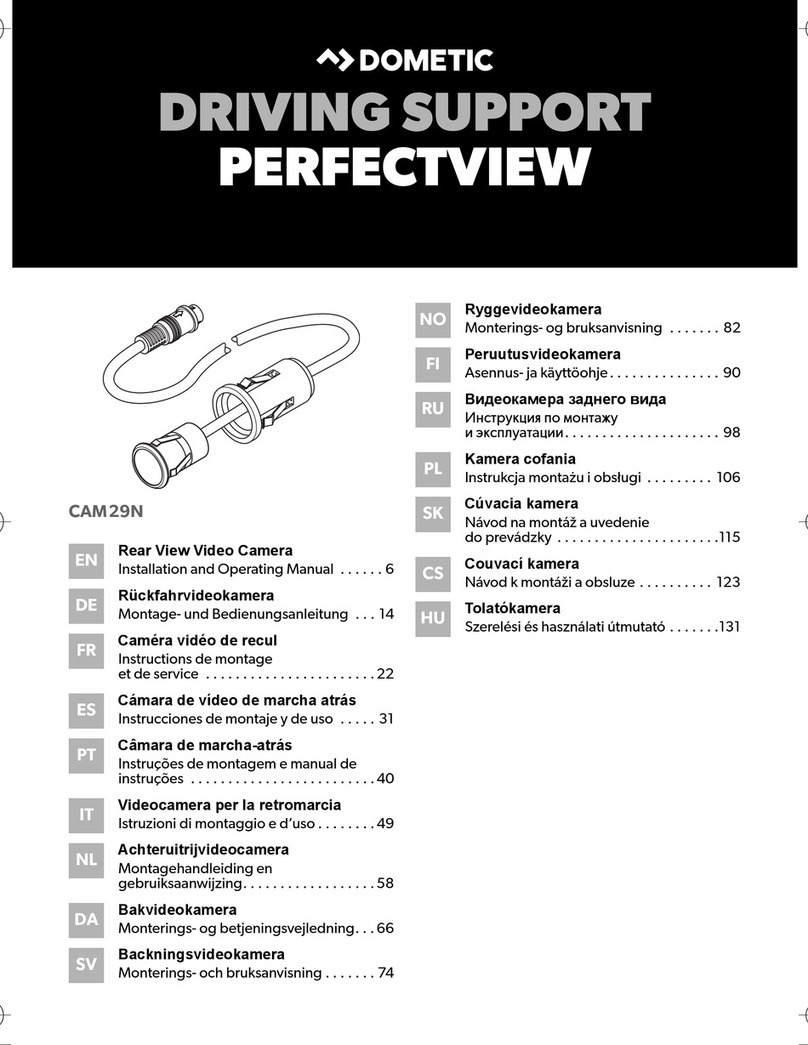Federal Signal Corporation CAMSET56-NTSC-2 User manual

Mobile Camera Systems
Installation and Operation Manual
2562397C
REV. C 1009

i
Contents
1Safety Precautions ............................................................... 1
Safety Messages to Installers of Federal Signal
Mobile Camera Systems ................................................................... 1
2An Overview of the Mobile Camera Systems..................... 3
Turnkey Systems ............................................................................... 3
Customized Systems ......................................................................... 6
3Installing the Mobile Camera System ................................. 8
Installing the Rear-View Camera (CAMCCD-REARNTSC/
CAMCCD-REARPAL)..................................................................... 8
Installing the Side-View Camera (CAMCCD-SIDENTSC/
CAMCCD-SIDEPAL)..................................................................... 13
Installing the Flush-Mount Camera (CAMCCD-FLSHNTSC/
CAMCCD-FLSHPAL).................................................................... 17
Installing the Ball Camera (CAMCCD-BALLNTSC/
CAMCCD-BALLPAL) ................................................................... 22
Installing the Dome Camera (CAMCCD-DOMENTSC/
CAMCCD-DOMEPAL).................................................................. 27
Installing the Truck/Trailer Kit (CAMCABLE-TRK) .................... 31
Installing the Monitor (CAMLCD-INT-56, CAMLCD-INT-70,
CAMLCD-INT-70-B, CAMLCD-70) ..................................................32
Installing the Control Box (with the CAMLCD-70 Monitor)......... 35
4Connecting the Mobile Camera System ........................... 36
Option 1: Connections for system configured with CAMLCD-INT-56/
CAMLCD-INT-70 monitor, as in the CAMSET56-NTSC-2/
CAMSET56-PAL-2.........................................................................36
Option 2: System configured with CAMLCD-70 monitor and
CAMBOX-4NTSC/CAMBOX-4PAL (as in the CAMSET70-NTSC-4/
CAMSET70-PAL-4) .......................................................................37

ii
Option 3: System configured with CAMLCD-INT-70-B monitor, as
in the CAMSET70-NTSC4B/CAMSET70-PAL4B........................ 38
Option 4: System configured with CAMLCD-70 monitor and
CAMDVR-4-B Digital Video Recorder.......................................... 39
5Testing the System ............................................................. 43
6Operating the Mobile Camera System.............................. 44
Option 1: System Configured with CAMLCD-INT-56/
CAMLCD-INT-70 Monitor, as in the CAMSET56-NTSC-2/
CAMSET56-PAL-2......................................................................... 44
Option 2: System Configured with a CAMLCD-70 Monitor and
CAMBOX-4NTSC/CAMBOX-4PAL
(as in CAMSET70-NTSC-4/CAMSET70-PAL-4) ........................ 46
Option 3: System Configured with a CAMLCD-INT-70-B monitor
(as in CAMSET70-NTSC4B/CAMSET70-PAL4B)....................... 48
7Obtaining Service and Support......................................... 52
Returning a Product to Federal Signal ............................................ 52
8Product Specifications and Part Numbers....................... 54

1
1Safety Precautions
For your safety, read this manual thoroughly before installing and operat-
ing the Federal Signal Mobile Camera System. The safety messages in this
section are reminders to exercise extreme care at all times. To download
copies of the manual, go to www.fedsig.com or call the Federal Signal
Service Department at 1-800-433-9132, 7 a m to 5 p m , Monday through
Friday (Central Time).
Safety Messages to Installers of Federal Signal
Mobile Camera Systems
People’s lives depend on your proper installation of our products. It is
important to read and follow all instructions shipped with this prod-
uct. In addition, listed below are some other important safety instruc-
tions and precautions you should follow:
• Toproperlyinstallavehicularcamerasystem,youmusthaveagood
understanding of automotive electrical systems along with proficiency
in the installation and use of safety warning equipment.
• Themobilecamerasystemisonlyasupplementtotherear-view/side-
view mirrors of the vehicle. The system is not a substitute for the
proper use of the rear-view/side-view mirrors of the vehicle. Always
use caution when backing up.
• DONOTinstallequipmentorroutewiringinthedeploymentpathof
an airbag.
• Whendrillingintoavehiclestructure,besurethatbothsidesofthe
surface are clear of anything that could be damaged.
• Locate the camera(s), monitor, keyboard, control box, and digital
video recorder (as applicable) so the VEHICLE and SYSTEM can be
operated safely under all driving conditions.
• You should frequently inspect the camera system to ensure that it
is operating properly and that it is securely attached to the vehicle.
The front face of any installed cameras should be kept clean and
free from any accumulated dirt or grime so that the cameras may
provide the clearest image. Obstructions to the camera image limit the
effectiveness of the system.

2
Safety Precautions
• If a vehicle seat is temporarily removed, verify with the vehicle
manufacturer if the seat needs to be recalibrated for proper airbag
deployment.
• Donotopenorservicethemonitor,cameraelement,orcontrolbox.
There are no user-serviceable parts inside. Opening or servicing any
component will void the component’s warranty.
•
File these instructions in a safe place and refer to them when maintaining
and/or reinstalling the product.
Failure to follow all safety precautions and instructions may result in
property damage, serious injury, or death to you or others.

3
2An Overview of the Mobile Camera Systems
Federal Signal Mobile Camera Systems provide drivers of vehicles used in
towing and recovery, fire/EMS, utilities, highway maintenance/DOT, sani-
tation, construction, and in many other industries an extended field of view
when backing up or maneuvering their vehicles in environments where op-
timum visibility is important for enhanced safety. Designed exclusively for
professional applications, all Federal Signal systems and components are
built with the distinct needs of the commercial/industrial market in mind
and are backed by our two-year warranty.
Turnkey Systems
Three turnkey mobile camera systems are available:
CAMSET56-NTSC-2/CAMSET56-PAL-2
CAMSET70-NTSC-4/CAMSET70-PAL-4
CAMSET70-NTSC4B/CAMSET70-PAL4B
Each system includes a monitor, a standard rear-view camera, a camera-
to-monitor extension cable, and accessories. Components and systems that
are NTSC-compatible include “NTSC” in the part number, and those that
are PAL-compatible include “PAL” in the part number. The NTSC video
standard is primarily a North American video standard, whereas the PAL
video standard is predominantly a European video standard.
CAMSET56-NTSC-2/CAMSET56-PAL-2
This system includes:
• a5.6"-diagonalcolorTFTLCDmonitor(CAMLCD-INT-56)
• a high-resolution rear-view camera with infrared low-light vi-
sion capability and a microphone, with a mounting hardware kit
(CAMCCD-REARNTSC/CAMCCD-REARPAL)
• a65.5ft(20m)camera-to-monitorextensioncable
(CAMCABLE-20)
• aninput/power/triggerwiringharnesswithinputsandindepen-
dent triggers for two cameras (CAMADP-INT-2)
• amonitormountingbracketwithmountinghardware
(CAMLCD-BRACKET)

4
An Overview of the Mobile Camera Systems
Features
✓Support for one or two cameras—an optional additional
camera can connect to the CAM2 connector on the input/
power/trigger wiring harness
✓Automatic triggering of either of two connected cameras
via individual camera trigger wires
✓Individual camera settings that are configurable for normal
view or mirror-image view
✓Easy setup with a minimum of connections
✓Intuitive controls on the monitor for adjusting the picture
quality of the image and the volume of the built-in micro-
phone of the connected camera (as applicable)
✓CAMCCD-REARNTSC/CAMCCD-REARPAL is IP68-
rated for challenging commercial applications that require
a waterproof and dustproof camera
CAMSET70-NTSC-4/CAMSET70-PAL-4
This system includes:
• a7.0"-diagonalcolorTFTLCDmonitor(CAMLCD-70)
• a high-resolution rear-view camera with infrared low-light vi-
sion capability and microphone, with a mounting hardware kit
(CAMCCD-REARNTSC/CAMCCD-REARPAL)
• a65.5ft(20m)camera-to-monitorextensioncable
(CAMCABLE-20)
• fourindividualtriggerwiresforeachoftheavailablecamerain-
puts
• afour-camera-capablecontrolboxwithwiredremotekeyboard
that selects the image of any of the connected cameras or a split-
screen combination (CAMBOX-4NTSC/CAMBOX-4PAL)
• amonitormountingbracketwithmountinghardware
(CAMLCD-BRACKET)
Features
✓Support for one to four cameras—optional additional cam-
eras can connect to one of the available inputs on the in-
cluded control box

5
An Overview of the Mobile Camera Systems
✓Automatic triggering of any of up to four connected cam-
eras via individual camera trigger wires
✓Individual camera settings that are configurable for normal
view or mirror-image view
✓Easy setup with a minimum of connections
✓Split-screen viewing of multiple connected cameras
✓Intuitive controls on the monitor for adjusting the picture
quality of the image and volume of the built-in microphone
of the connected camera (as applicable)
✓CAMCCD-REARNTSC/CAMCCD-REARPAL is IP68-
rated for challenging commercial applications that require
a waterproof and dustproof camera
CAMSET70-NTSC4B/CAMSET70-PAL4B
This system includes:
• a7.0"-diagonalcolorTFTLCDmonitor(CAMLCD-INT-70-B)
• a high-resolution rear-view camera with infrared low-light vi-
sion capability and a microphone, with a mounting hardware kit
(CAMCCD-REARNTSC/CAMCCD-REARPAL)
• a65.5ft(20m)camera-to-monitorextensioncable
(CAMCABLE-20)
• afourindividualtriggerwiresforeachoftheavailablecamera
inputs
• Input/power/triggerwiringharnesswithinputsandindependent
triggers for four cameras (CAMADP-INT-4)
• Monitormountingbracketwithmountinghardware(CAMLCD-
BRACKET)
Features
✓Support for one to four cameras—optional additional cam-
eras can connect to one of the available inputs
✓Automatic triggering of any of up to four connected cam-
eras via individual camera trigger wires
✓Individual camera settings that are configurable for normal
view or mirror-image view
✓Easy setup with a minimum of connections

6
An Overview of the Mobile Camera Systems
✓Split-screen viewing of multiple connected cameras
✓Intuitive controls on the monitor for adjusting the picture
quality of the image and volume of the built-in microphone
of the connected camera (as applicable)
✓CAMCCD-REARNTSC/CAMCCD-REARPAL is IP68-
rated for challenging commercial applications that require
a waterproof and dustproof camera
Customized Systems
To outfit a unique installation for your application, select a monitor, up
to four cameras, and camera-to-monitor extension cables of the appropri-
ate length. (If the CAMLCD-70 is selected, either the CAMBOX-4NTSC/
CAMBOX-4PAL control box or CAMDVR-4-B digital video recorder is
also required as described under “Monitors” below.) For technical details,
see “Product Specifications and Part Numbers” on page 54.
Monitors
• 5.6"-diagonalmonitor(CAMLCD-INT-56):uptotwocameras
can be connected
• 7.0"-diagonalmonitor(CAMLCD-INT-70):uptotwocameras
can be connected
• 7.0"-diagonalmonitor(CAMLCD-70withCAMBOX-4NTSC/
CAMBOX-4PAL). Up to four cameras can be connected (split-
screen viewing enabled)
• 7.0"-diagonalmonitor(CAMLCD-70withCAMDVR-4-B):up
to four cameras can be connected (split-screen viewing enabled
and no triggering of individual cameras). All connected cameras
are digitally recorded to the hard disk of the video recorder
• 7.0"-diagonalmonitor (CAMLCD-INT-70-B): uptofourcam-
eras can be connected (split-screen viewing enabled)
Cameras
• Standardrear-viewcamera(CAMCCD-REARNTSC/
CAMCCD-REARPAL)
• Flush-mountcamera(CAMCCD-FLSHNTSC/
CAMCCD-FLSHPAL)

7
An Overview of the Mobile Camera Systems
• Side-viewcamera(CAMCCD-SIDENTSC/CAMCCD-SIDEPAL)
• Ballcamera(CAMCCD-BALLNTSC/CAMCCD-BALLPAL)
• Domecamera(CAMCCD-DOMENTSC/CAMCCD-DOMEPAL)
Camera-to-monitor extension cables (one per camera)
• 4in(0.1m)(CAMCABLE-SHORT)
• 16.5ft(5m)(CAMCABLE-5)
• 33ft(10m)(CAMCABLE-10)
• 49ft(15m)(CAMCABLE-15)
• 65.5ft(20m)(CAMCABLE-20)
• 131ft(40m)(CAMCABLE-40)

8
3Installing the Mobile Camera System
After unpacking the system components, examine them for damage that
may have occurred in transit. If a component has been damaged, do not at-
tempt to install or operate it. File a claim immediately with the carrier stat-
ing the extent of damage. Carefully check all envelopes, shipping labels,
and tags before removing or destroying them. Ensure that the parts listed
in the packing list are contained in the packing carton.
Installing the Rear-View Camera
(CAMCCD-REARNTSC/CAMCCD-REARPAL)
Before the installation, find an appropriate location for the rear-view cam-
era with these considerations in mind:
• Althoughthecameraiswaterproof,repeatedlyexposingittodirect,
high-pressure streams of water (as from a pressure washer) is not
recommended.
• Thematerialpropertiesandthicknessesofvehiclebodiesvarywidely.
The included hardware can accommodate many different vehicle
installations. However, it is recommended that you exercise judgment
when drilling holes into vehicle surfaces.
• Whendrillingintoavehiclestructure,besurethatbothsidesofthe
surface are clear of anything that could be damaged. Remove all
burrs from drilled holes. To prevent electrical shorts, grommet all
drilled holes through which wiring passes. (All Federal Signal camera
systems include grommets.) Also, ensure that the mounting screws do
not cause electrical or mechanical damage to the vehicle.
• Thiscameraisrecommendedforrear-viewapplicationsinheavyduty
vehicles. In most installations the trigger wire of this camera would
be connected to the reverse lights of the vehicle for automatic viewing
when the vehicle is operating in reverse. The camera is also equipped
with night-vision and audio capability.
• Ifthe camerais to beused inatypical backupcameraapplication,
the camera should be positioned so that the driver can obtain a wide,
unobstructed field of vision behind the vehicle.

9
Installing the Mobile Camera System
To install the rear-view camera, follow these steps:
Preparing to install the Rear-View Camera
1. Open the camera mounting hardware kit, which has:
• fourself-tappingscrews
• fourmachinescrewswithmatchinglockwashers,atwashers,
and nuts
• fourplasticscrewinsulators
• aninsulatingpad
• anAllenwrench
• waterproongtape
2. Use the Allen wrench to remove the sun shield and camera from
the mounting bracket so that the bracket can be used as a tem-
plate for marking drill-hole locations (Figure 1).
290A6046B
SUN SHIELD
MOUNTING BRACKET
INSULATING
PA D
2 TO 4 SELF-TAPPING SCREWS WITH
PLASTIC INSULATORS, LOCK WASHERS,
FLAT WASHERS AND NUTS
VEHICLE
CHASSIS
FLAT WASHER
LOCK WASHER
NUT
Figure 1. Rear-view camera installation
(CAMCCD-REARNTSC/CAMCCD-REARPAL)

10
Installing the Mobile Camera System
Marking and Drilling the Mounting Holes for the
Rear-View Camera
AIRBAG DEPLOYMENT
Do not install equipment or route wiring in the deployment path
of an airbag.
Failure to observe this warning will reduce the effectiveness of
the airbag or potentially dislodge the equipment, causing serious
injury.
SEAT REMOVAL PRECAUTION
If a vehicle seat is temporarily removed, verify with the vehicle
manufacturer if the seat needs to be recalibrated for proper airbag
deployment.
Failure to heed this warning could result in death or serious injury.
LOCATING OPERATORS CONTROLS
Locate the camera(s), monitor, keyboard, control box, and digital
video recorder (as applicable) so the VEHICLE and SYSTEM can
be operated safely under all driving conditions.
Failure to heed this caution could result in driver distraction or
driver error while operating the vehicle.
DRILLING PRECAUTIONS
When drilling holes, check the area into which you are drilling to
be sure you do not damage vehicle components while drilling. All
drilled holes should be deburred and all sharp edges should be
smoothed. All wire routings going through drilled holes should be
protected by a grommet or convolute/split loom tubing.
1. Use the camera mounting bracket as a guide to mark the locations
of two to four mounting holes to be drilled into the vehicle (Fig-
ure 1 on page 9). These locations should lie in the two channels
on either side of the circular hole in the center of the bracket.

11
Installing the Mobile Camera System
2. Mark a location for a 3/4 in (19.0 mm) hole, typically centered
between the marked locations of the mounting holes, which will
accept the rubber grommet on the camera output cable. Once
you drill the center hole, you can route the camera output cable
through it to:
a) a camera-to-monitor extension cable that can be either:
• oneCAMCABLE-SHORT/-5/-10/-15/-20/-40or
• twoCAMCABLE-SHORT/-5/-10/-15/-20connectedin
series with adapter CAMCABLE-EXT
that is then connected to
• either the CAM1 or CAM2 input on the input/power/
trigger wiring harness (CAMADP-INT-2) of the CAM-
LCD-INT-56/CAMLCD-INT-70 monitor or
• oneofthefourcamerainputsontheCAMBOX-4NTSC/
CAMBOX-4PAL control box (for use with the CAM-
LCD-70 monitor) or
• oneofthefourcamerainputsontheinput/power/trigger
wiring harness (CAMADP-INT-4) of the CAMLCD-
INT-70-B
or
b) a special DVR system camera-extension cable that is connect-
ed to one of the four camera inputs on the CAMDVR-4-B
3. Drill holes at the drill-position marks that are correctly sized for
the screws you are using:
a) If you are using the self-tapping screws, drill two to four
9/64 in (3.5 mm) holes.
b) If you are using the machine screws, drill two to four 13/64 in
(5.2 mm) clearance holes.
4. Drill a 3/4 in (19.0 mm) hole at the mark for the camera output
cable. Smooth and deburr the hole.

12
Installing the Mobile Camera System
Mounting the Rear-View Camera
1. Install the insulating pad on the bottom of the camera mounting
bracket. If you are using the center hole in the bracket for the
camera output cable, route the cable through the hole.
2. Align the mounting bracket with the drilled mounting holes,
guide the camera output cable into the 3/4 in (19.0 mm) hole,
and secure the rubber grommet in the hole.
3. To fasten the mounting bracket to the vehicle, choose the appro-
priate screws for the mounting holes you drilled:
a) If you are using the self-tapping screws, guide each screw
through a plastic insulator, then through one of the two chan-
nels in the mounting bracket and into the drilled holes. Fas-
ten the screws tightly to the vehicle body.
b) If you are using the machine screws, guide each screw through
a plastic insulator, then through one of the two channels in the
mounting bracket into the drilled holes. On the opposite side
ofthevehiclechassisatthemountinglocation,installtheat
washer followed by the lock washer and nut. Fasten the mount-
ing hardware tightly to the vehicle body.
4. Connect a one of these camera extension cable to the camera:
• oneCAMCABLE-SHORT/-5/-10/-15/-20
• twoCAMCABLE-SHORT/-5/-10/-15/-20connectedinseries
with adapter CAMCABLE-EXT
• oneCAMCABLE-40
• specialDVRcable(asapplicable)
5. Wrapthecableconnectioninthesuppliedblackwaterproong
tape.

13
Installing the Mobile Camera System
Installing the Side-View Camera
(CAMCCD-SIDENTSC/CAMCCD-SIDEPAL)
Before the installation, find an appropriate location for the side-view cam-
era with these considerations in mind:
• Althoughthecameraiswaterproof,repeatedlyexposingittodirect,
high-pressure streams of water (as from a pressure washer) is not
recommended.
• Thematerialpropertiesandthicknessesofvehiclebodiesvarywidely.
The included hardware can accommodate many different vehicle
installations. However, it is recommended that you exercise judgment
when drilling holes into vehicle surfaces.
• Thiscameraisrecommendedforinstallationoneithertheleftorright
side of a vehicle. Typically, the trigger wire for the camera is connected
to the turn-signal circuit of the vehicle for automatic viewing when the
vehicle is turning. The camera is also equipped with night-vision and
audio capability.
• Whendrillingintoavehiclestructure,besurethatbothsidesofthe
surface are clear of anything that could be damaged. Remove all burrs
from drilled holes. To prevent electrical shorts, grommet all drilled
holes through which wiring passes (all Federal Signal cameras include
grommets). Also, ensure that the mounting screws do not cause
electrical or mechanical damage to the vehicle.
• Ifthecameraistobeusedinatypicalside-viewcameraapplication,
the camera should be positioned so that the driver can obtain a wide,
unobstructed field of vision of the left or right side of the vehicle.
To install the side-view camera, follow these steps:
Preparing to Install the Side-View Camera
1. Open the camera mounting hardware kit, which has:
• fourself-tappingscrews
• fourmachinescrewswithmatchinglockwashers,atwashers,
and nuts
• anAllenwrenchforadjustingtheorientationofthecamera
cover (left or right side of vehicle)
• waterproongtape

14
Installing the Mobile Camera System
2. To access the mounting holes in the base as a guide for marking
drill-position holes, remove the four screws that secure the cam-
era cover (Figure 2, step 3).
290A6047B
Figure 2. Side-view camera installation
(CAMCCD-SIDENTSC/CAMCCD-SIDEPAL
3. To verify the orientation of the camera in its housing before the
installation, connect the camera to the monitor and turn on the
system.
You can adjust the camera assembly inside the housing for either
the left or right side of the vehicle. If the image on the moni-
tor appears upside down on the preferred installation side of the
vehicle,usetheAllenwrenchtoremoveandipthecameraas-
sembly 180 degrees. Then install it to switch the camera from a
left-side-view camera to a right-side-view camera or vice-versa.

15
Installing the Mobile Camera System
Marking and Drilling the Mounting Holes for the
Side-View Camera
AIRBAG DEPLOYMENT
Do not install equipment or route wiring in the deployment path
of an airbag.
Failure to observe this warning will reduce the effectiveness of
the airbag or potentially dislodge the equipment, causing serious
injury.
SEAT REMOVAL PRECAUTION
If a vehicle seat is temporarily removed, verify with the vehicle
manufacturer if the seat needs to be recalibrated for proper airbag
deployment.
Failure to heed this warning could result in death or serious injury.
LOCATING OPERATORS CONTROLS
Locate the camera(s), monitor, keyboard, control box, and digital
video recorder (as applicable) so the VEHICLE and SYSTEM can
be operated safely under all driving conditions.
Failure to heed this caution could result in driver distraction or
driver error while operating the vehicle.
DRILLING PRECAUTIONS
When drilling holes, check the area into which you are drilling to
be sure you do not damage vehicle components while drilling. All
drilled holes should be deburred and all sharp edges should be
smoothed. All wire routings going through drilled holes should be
protected by a grommet or convolute/split loom tubing.
1. Use the mounting base as a guide to mark the locations of four
mounting holes on the vehicle chassis and the 3/4 in (19.0 mm)
hole for the camera output cable. Once you drill this hole, you
can route the camera output cable through it to:

16
Installing the Mobile Camera System
a) a camera extension cable that can be either:
• oneCAMCABLE-SHORT/-5/-10/-15/-20/-40or
• twoCAMCABLE-SHORT/-5/-10/-15/-20connectedin
series with adapter CAMCABLE-EXT
that is connected to:
• either the CAM1 or CAM2 input on the input/power/
trigger wiring harness (CAMADP-INT-2) of the CAM-
LCD-INT-56/CAMLCD-INT-70 monitor or
• oneofthefourcamerainputsontheCAMBOX-4NTSC/
CAMBOX-4PAL control box (for use with the CAM-
LCD-70 monitor) or
• oneofthefourcamerainputsontheinput/power/trigger
wiring harness (CAMADP-INT-4) of the CAMLCD-
INT-70-B
or
b) a special DVR system camera-extension cable that is connect-
ed to one of the four camera inputs on the CAMDVR-4-B
2. Whether you are using either self-tapping or machine screws,
drill 0.116 in (3.0 mm) holes (a #32 drill bit can be used) at the
marked positions for the four mounting holes.
3. Drill a 3/4 in (19.0 mm) hole at the mark for the camera output
cable. Smooth and deburr the hole.
Mounting the Side-View Camera
1. Align the mounting base with the drilled mounting holes on the
vehicle. Guide the camera output cable into the 3/4 in (19.0 mm)
hole and secure the rubber grommet on the cable in this hole.
2. To affix the camera to the vehicle, choose the appropriate screws
for the holes you drilled above:
a) If you are using the self-tapping screws, guide each screw
through the camera base, then into the drilled holes. Fasten
the screws tightly to the vehicle body.
b) If you are using the machine screws, guide each screw with a
lockwasherandatwasherthroughthecamerabase.Install
the matching nut on the opposite side of the vehicle surface.
Fasten the mounting hardware tightly to the vehicle body.

17
Installing the Mobile Camera System
3. Connect the camera extension cable (one CAMCABLE-
SHORT/-5/-10/-15/-20/-40 or two connected in series with CAM-
CABLE-EXT) or special DVR cable (as applicable) to the camera.
4. Wrapthecableconnectioninthesuppliedblackwaterproong
tape.
Installing the Flush-Mount Camera
(CAMCCD-FLSHNTSC/CAMCCD-FLSHPAL)
Before the installation, nd an appropriate location for the ush-mount
camera with these considerations in mind:
• Althoughthecameraiswaterproof,repeatedlyexposingittodirect,
high-pressure streams of water (as from a pressure washer) is not
recommended.
• Decidewhetheryouwillbemountingthecameratothevehiclewith
theincludedbracketorushtoavehiclesurface.
• Thematerialpropertiesandthicknessofvehiclebodiesvarywidely.
The included hardware can accommodate many different vehicle
installations. However, it is recommended that you exercise judgment
when drilling holes into vehicle surfaces.
• Whendrillingintoavehiclestructure,besurethatbothsidesofthe
surface are clear of anything that could be damaged. Remove all burrs
from drilled holes. To prevent electrical shorts, grommet all drilled
holes through which wiring passes (all Federal Signal cameras include
grommets). Also, ensure that the mounting screws do not cause
electrical or mechanical damage to the vehicle.
• Thiscameraisrecommendedforush-mountinstallationonavehicle.
As an alternative, a mounting bracket is included for mounting above
the surface of the vehicle.
• Thecamerashouldbepositionedsothatthedrivercanobtainawide,
unobstructed field of vision.
This manual suits for next models
5
Table of contents
